Ammonia has emerged as a frontrunner in the future fuels debate for decarbonizing shipping with supporters buoyed by its readiness in comparison with other alternative fuels and its near-to-zero carbon count. But toxicity risks mean that ammonia isn’t a clean swap-in for today’s carbon-heavy fuels.
Recognizing ammonia’s potential, the European Maritime Safety Agency (EMSA) has published a study into the ‘Potential of Ammonia as Fuel in Shipping’ balancing the pros against the cons. EMSA points to the “extensive land-based experience” with the production and use of ammonia for the petrochemical and fertilizer industries as a good foundation for its use as a marine fuel, while the requirements for storage, distribution, and personal protective equipment related to the carriage of ammonia in the IGC Code deliver some of the necessary statutory requirements to guide its use in ammonia-fuelled ships. It describes the toxicity challenges and related risks as “significant” yet “manageable”, noting that they will add complexity to ship designs.
EMSA stressed that current regulations on fuels cannot easily be transferred to ammonia. The IMO is currently developing guidelines for the use of alternative fuels, including ammonia. Those guidelines are being developed in a correspondence group that will report to the next session of the IMO’s Sub-Committee on Carriage of Cargoes and Containers in 2023.
The report notes that the introduction of regional market-based measures, for example, the EU’s Fit for 55 schemes, provides a springboard for the promotion of ammonia as a fuel. But it stresses that international rather than regional policies are needed if the uptake of ammonia as a fuel is to be successful in the global shipping industry.
Alliances for Decarbonization
Wintershall Dea and HES join forces for CO2 hub in Wilhelmshaven: German natural gas and oil company Wintershall Dea and compatriot liquid bulk terminal HES Wilhelmshaven Tank Terminal have signed a memorandum of understanding (MoU) to jointly develop a CO2 hub at Germany’s single deepest draft port. The companies plan to develop a hub named CO2nnectNow at HES Wilhelmshaven Tank Terminal, which will store CO2 captured from German industrial sites. As explained, the CO2 will first be shipped from the CO2nnectNow hub. Later, it will be transported via pipeline from Germany’s only deep-water port to geological formations in the Norwegian and Danish North Sea to be permanently and safely stored. The process is expected to be key to decarbonizing the hard-to-abate industries in Germany.
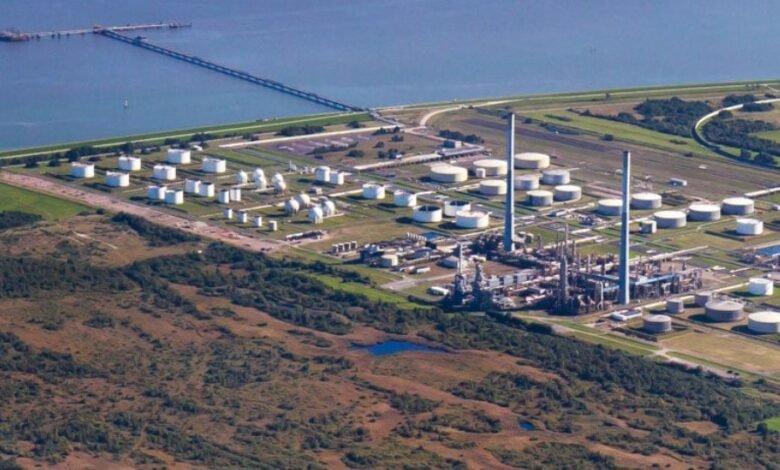 DNV to support the transition to a sustainable future with the new partnership:
DNV to support the transition to a sustainable future with the new partnership: Classification society DNV has joined a group of mission-driven companies as part of a European Fund to accelerate the push towards net zero. The fund has been launched by Energy Impact Partners (EIP), a global venture capital firm supporting the transition to a sustainable future. The fund is structured to enable EIP to locally partner with European entrepreneurs and support their growth with a combination of capital and commercial support through EIP’s coalition of industrial firms. Specifically, EIP has €390 million ($383 million) to deploy in European investments to accelerate the growth of innovative technologies which have the potential to drive the transition towards net zero.
Consortium eyes hydrogen and ammonia projects along US Gulf Coast: A consortium comprising Air Liquide, Chevron Corporation, LyondellBasell, and Uniper is planning to conduct a study that will evaluate and potentially advance the development of a hydrogen and ammonia production facility along the US Gulf Coast. The planned facility could support industrial decarbonization and mobility applications in the region and expand clean ammonia exports, helping to increase the supply of lower carbon power internationally, the partners said. The potential project to be studied is intended to cover the end-to-end energy value chain, utilizing each participant’s technical expertise in production, operational experience, storage, distribution, and export logistics.
Industry Actions
Grimaldi clears €70 million loans for renewal of its eco-friendly fleet: Italian shipping company Grimaldi Group has secured two loans, totaling €70 million, from the Intesa Sanpaolo bank for the purchase of two vessels belonging to the Grimaldi Green 5th Generation (GG5G) class. The transaction consists of two loans for the purchase of new ships Eco Mediterranea and Eco Adriatica, the tenth and eleventh of GG5G class, respectively. Grimaldi said that both lines of credit are characterized by a pricing mechanism linked to the achievement of specific environmental, social, and governance (ESG) targets.
NYK presents its efforts for the introduction of ammonia as a marine fuel at two international conferences: NYK recently participated in two conferences held as part of Tokyo GX Week* to talk about the possibility of a demand increase for ammonia as a marine fuel and to introduce the company’s efforts toward social implementation of fuel ammonia. The International Conference on Fuel Ammonia, organized by Japan’s Ministry of Economy, Trade, and Industry (METI) and the Clean Fuel Ammonia Association (CFAA), aims to strengthen the foundation for international public-private partnerships to build a stable and flexible market and supply chain for fuel ammonia, which would be effective in combating global warming. This second conference, following the conference in 2021, was held on September 28 and was attended by more than 20 governments, international organizations, research institutes, and private companies.
Tools for Emissions
ZeroNorth unveils new AI-enabled fuel model to help the shipping industry to drive down emissions and improve efficiency in operations: Technology company ZeroNorth has today unveiled its new advanced fuel model, which uses a combination of AI and best practice naval architecture knowledge to predict the expected operational fuel consumption of any type of vessel in the global fleet. The new service combines the ability to accurately predict fuel consumption in real operational conditions for vessels that users have little or no data on with the ability to quickly learn and adjust to a very high level of accuracy as the vessel reports data or makes high-frequency data available. The fuel model will use machine learning technology to learn from the vast amount of data held within the ZeroNorth platform, across all vessels and vessel types.
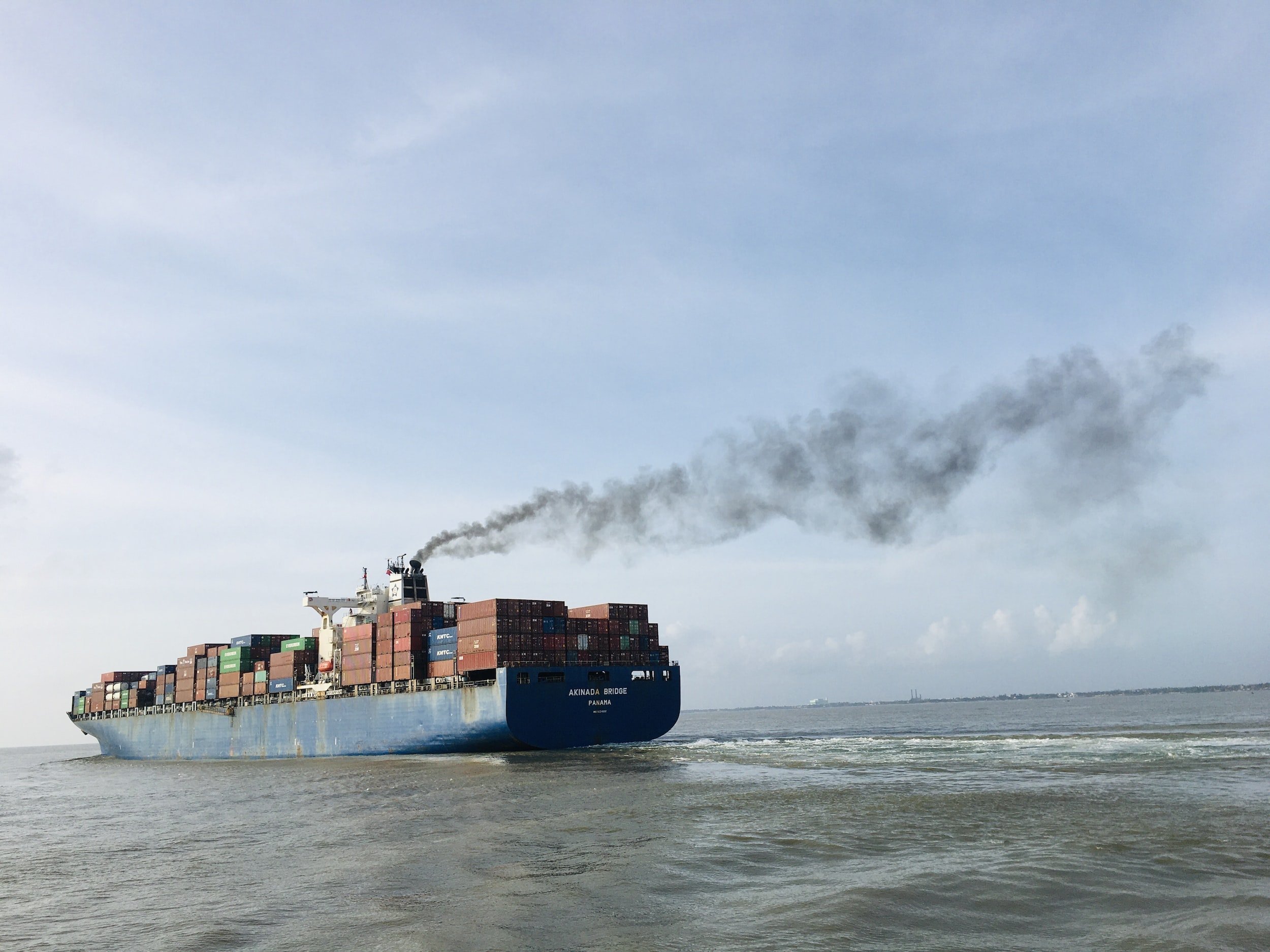
Next Generation of Vessels
CONTAINER
MSC's second eco-friendly 24,116 TEU undocked: The second ultra-large containership with a capacity of 24,116 TEUs built for Mediterranean Shipping Company (MSC) has been undocked in China. The ceremony took place on 11 October at Hudong-Zhonghua’s shipyard Changxingdao. The new build is independently designed by Hudong-Zhonghua and classed by the classification society DNV. The first MSC’s ultra-large containership with a capacity of 24,116 TEUs was undocked at the same shipyard two months ago.
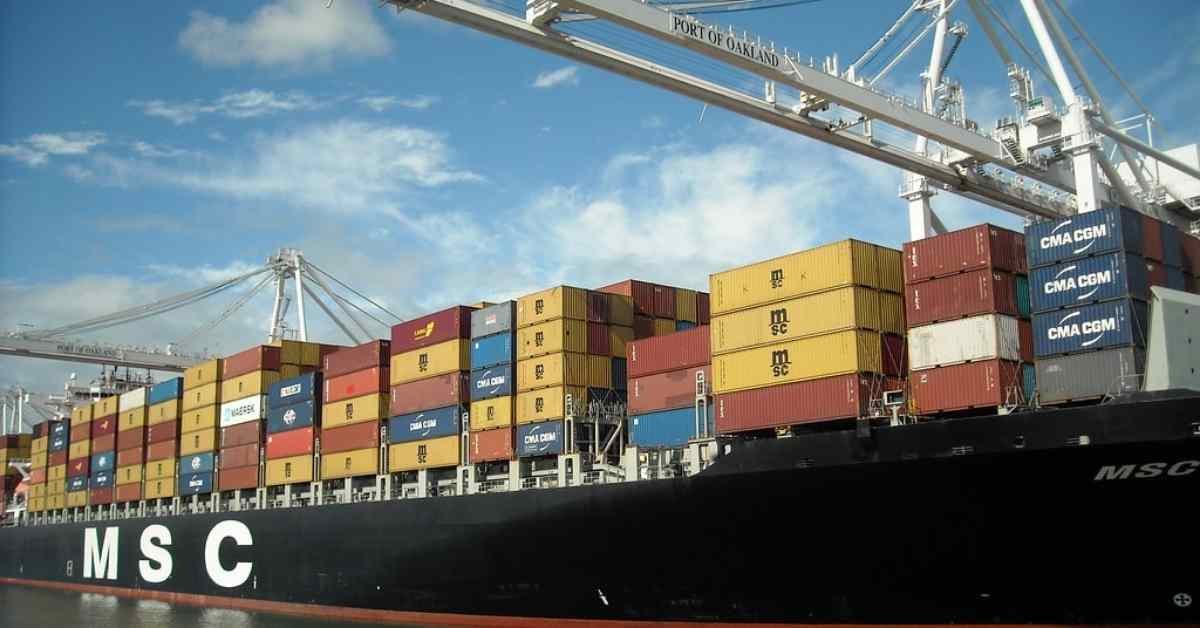 VLCCs with the world's 1st high-manganese steel LNG fuel tanks named:
VLCCs with the world's 1st high-manganese steel LNG fuel tanks named: South Korean shipbuilder Daewoo Shipbuilding & Marine Engineering (DSME) has held a naming ceremony for two dual-fuel very large crude oil carriers (VLCCs) equipped with liquefied natural gas (LNG) fuel tanks made of high manganese steel. The high-manganese steel LNG fuel tanks, dubbed as the world’s first, come because of a 10-year research and cooperation with compatriot steel-making company POSCO. In June this year, the partners achieved a milestone by installing the IMO Type-C LNG fuel tanks using high-manganese steel.
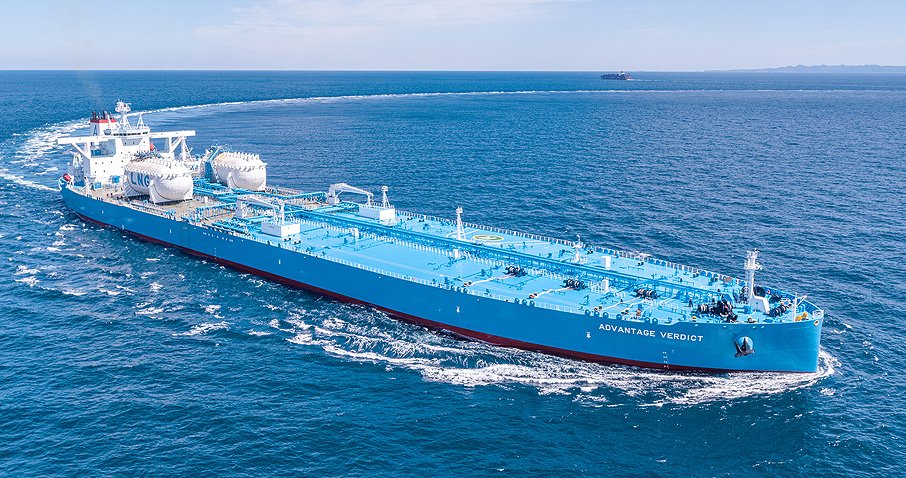 Maersk's newly ordered box ships to run on MAN ES methanol engines:
Maersk's newly ordered box ships to run on MAN ES methanol engines: German engine manufacturer MAN Energy Solutions (MAN ES) has received a ‘major order’ to deliver dual-fuel methanol engines for six 17,000 TEU containerships being built for Danish integrated logistics company A.P. Moller – Maersk. According to MAN ES, South Korean shipbuilder Hyundai Heavy Industries (HHI) ordered six MAN B&W G95ME-C10.5-LGIM dual-fuel main engines for the construction of the six methanol-powered vessels ordered by Maersk.
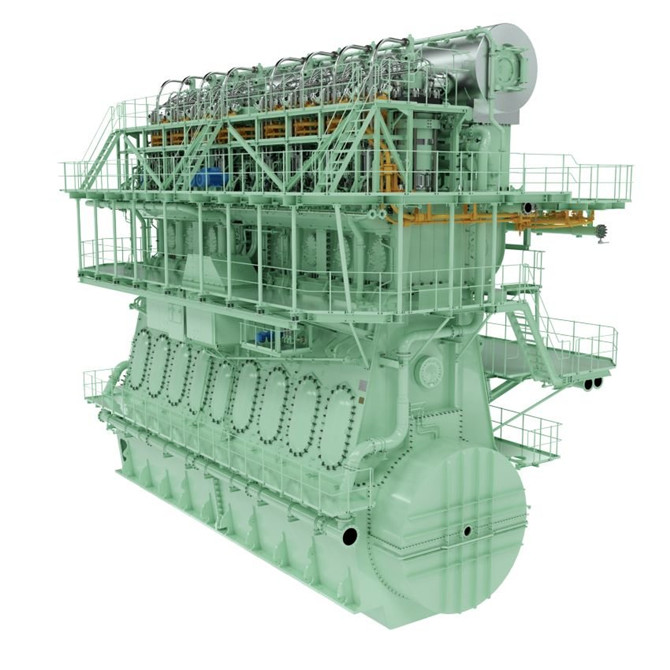
Wan Hai Lines names new eco-friendly 13,100 TEU boxship duo: The ceremony took place (20 October) at Samsung Heavy Industries’ (SHI) Geoje shipyard. WAN HAI A07 and WAN HAI A08 are the first two vessels in the series of 13,100 TEU containerships built by SHI’s shipyard. The 13,100 TEUs are designed with a length of 335 meters, a breadth of 51 meters, a draft of 16 meters, and a maximum cruising speed of 22 knots, which is currently one of the largest ship types in Wan Hai Lines’ owned fleet. The containerships take energy efficiency and environmentally-friendly aspects into account. They are equipped with full-balanced twisted bulb rudders, a pre-swirl fin, and alternative maritime power (AMP) system.
TANKER
South Korea’s first methanol-powered tanker named: The 50,000 DWT vessel, dubbed South Korea’s first ship to run on methanol, was named Savonetta Sun at a ceremony held on 14 October. The vessel will be chartered to Waterfront Shipping, the shipping unit of Canadian methanol producer Methanex. KSS Line signed a charter contract with the company for a period of 15 years.
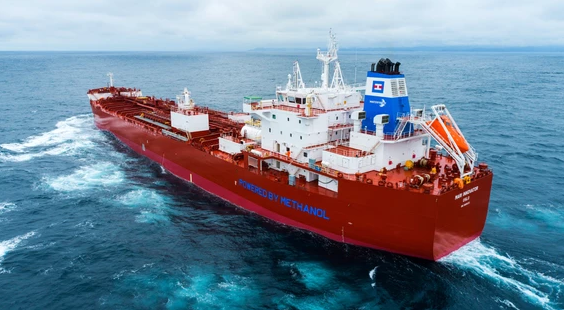
CAR CARRIERS
UECC cheers the delivery of 3rd multi-fuel LNG battery hybrid car carrier: Norway-based RoRo transportation provider United European Car Carriers (UECC) has taken delivery of its third and final newbuild multi-fuel LNG battery hybrid pure car and truck carrier (PCTC). The latest new build, to be named Auto Aspire, was delivered on 20 October at China’s Jiangnan Shipyard and will soon join sister’s vessels Auto Advance and Auto Achieve which are plying trade routes in Northern Europe. The newbuild trio are designed initially to run on liquefied natural gas (LNG), which can reduce emissions by around 25% compared with other fossil fuels, but will be able to use drop-in fuels with lower carbon intensity such as bio-LNG and synthetic LNG as these become more widely available.
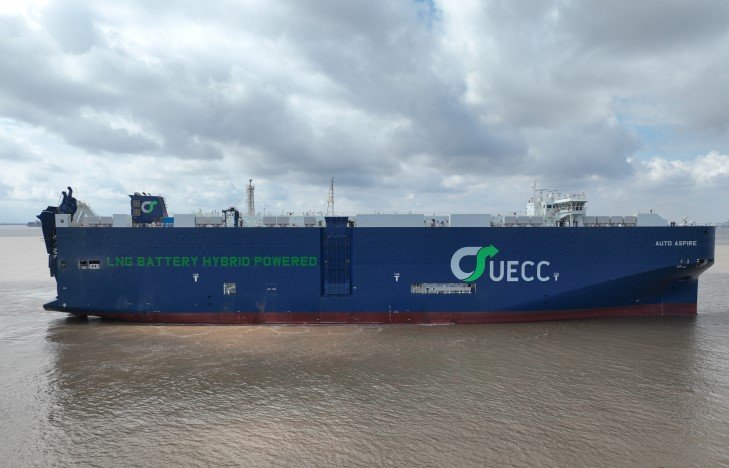
FERRIES
Russia’s new dual-fuel ferry bunkered with LNG: Russia’s new dual-fuel automobile and railway ferry General Chernyakhovsky has been bunkered with liquefied natural gas (LNG) for the first time. The ferry is equipped with a power system that can use LNG or low-sulfur diesel fuel as fuel.
Using LNG as fuel is expected to help increase the environmental friendliness of the transport infrastructure in the North-Western region of Russia, reducing emissions of carbon dioxide into the atmosphere by 20-30%, nitrogen oxides by more than 90%, sulfur oxides, and soot by 100%, compared to similar vessels bunkered with the traditional “heavy” fuel.
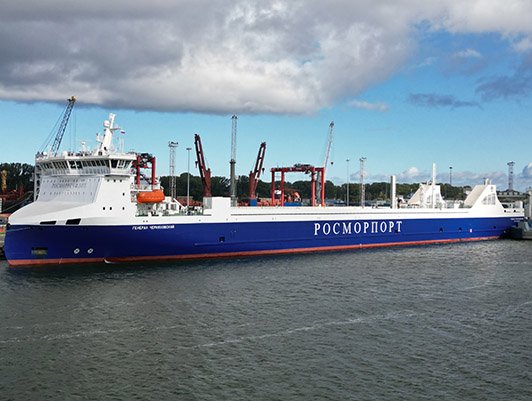
Technology
Key nuclear tests to get underway in the US bringing shipping a step closer to adopting atomic propulsion: Southern Company Services (SCS) and TerraPower have built and installed a new test facility at TerraPower’s laboratory in Everett, Washington. The integrated effects test, or IET, is the largest chloride salt system in the world and will be instrumental in helping to develop the team’s molten chloride fast reactor (MCFR) technology. The installation of the IET was part of a seven-year, $76m cost-shared project with the US Department of Energy to further develop the MCFR system.
Massive LNG-powered engine installed on Hapag-Lloyd’s 1st 23,660 TEU boxship: The 2,246-tonne engine was installed with the help of a floating crane deployed at the Daewoo Shipbuilding and Marine Engineering yard (DSME). According to Hapag-Lloyd, the new LNG-powered engine has a maximum power of 58.270 kW at 76.5 revolutions per minute. The main engine, type MAN-HHI G95ME-C.10.5-GI, is of high-pressure type and will be able to operate also on ‘green LNG’ in the future, Hapag-Lloyd confirmed to Offshore Energy.
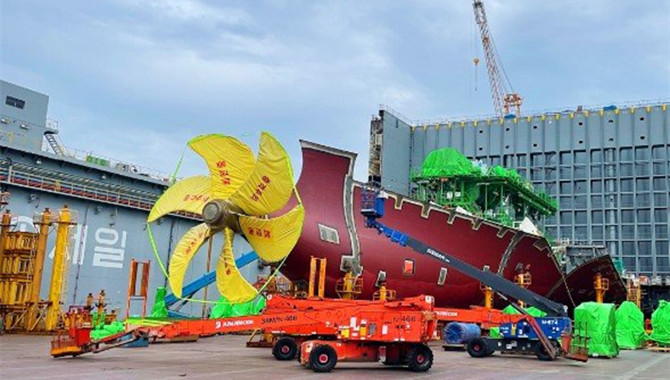
Shipyards
NACKS wins LR’s nod for ammonia-powered boxship: Chinese shipbuilder Nantong COSCO Khi Ship Engineering (NACKS) has secured approval in principle for its ammonia-powered containership design from the UK-based classification society Lloyd’s Register. The 16,000 TEU ammonia-fuelled container ship has been jointly developed by LR, NACKS, and Hudong Heavy Machinery. The joint development project was launched back in 2021. The AiP was awarded following a risk-based HAZID certification in which the three partners discussed the flammable, highly toxic, and corrosive nature of ammonia and attended risk assessment seminars.
Fuels
Lloyd’s Register to investigate ammonia fuel supply potential in Pilbara: LR will provide an analysis focusing on key factors needed to assess the potential uptake of ammonia refuelling (also known as bunkering). The feasibility study will comprise the market for clean fuels in shipping; shoreside infrastructure requirements; safety considerations; and the regulations required to support ammonia bunkering at Pilbara Ports Authority (PPA). The execution of the study is expected to take at least 12 months, according to the firm.
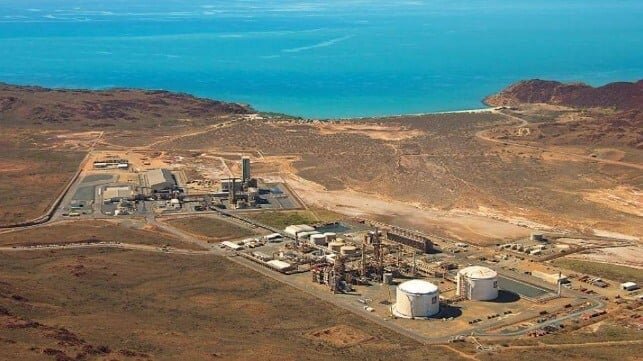
Wavelength secures methanol fuel supply deal in China: The Portugal-based energy and tech company has secured a contract for a methanol marine fuel supply system. As informed, the company has been awarded the engineering supply contract to design a methanol fuel supply system for marine engines. The system will be installed at an undisclosed engine manufacturing site in China. Furthermore, it will be used to perform the factory acceptance tests of the dual-fuel methanol engines built at that site.
Methanol Bunkering
China Shipbuilding Hengyu Energy (Shanghai), a subsidiary of China State Shipbuilding Corporation (CSSC), has completed the bunkering of three methanol-powered product tankers built by Guangzhou Shipyard International: CSSC Hengyu Energy is currently working on the compilation of the “Guidelines for Methanol Fueling of Ships” and the related standards with the aim of building the technical level of expertise related to bunkering operations and accelerating the development and uptake of methanol-fuelled ships.
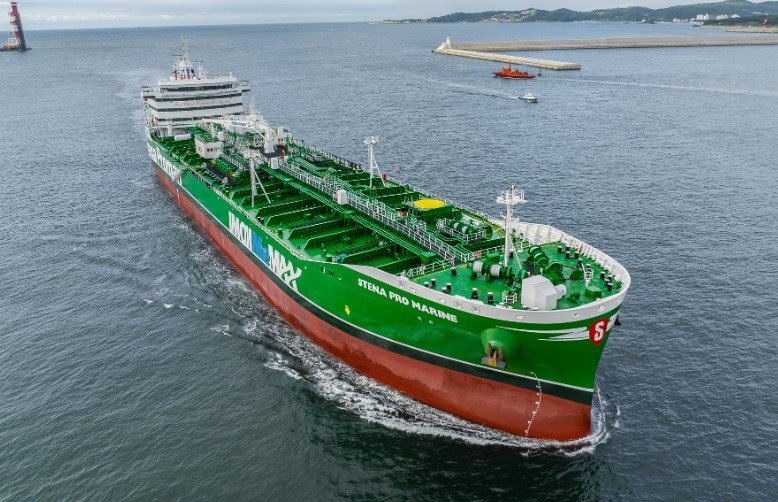
Biofuels
Biodiesel is the only readily available drop-in fuel right now, Stolt-Nielsen’s Head of Sustainability says: As the maritime industry explores scalable and viable options to replace fossil fuels, biodiesel is the only readily available drop-in alternative right now, according to Stolt-Nielsen’s Head of Sustainability at the Maritime and Port Authority of Singapore’s (MPA) bunkering conference and exhibition SIBCON. Most discussions about future fuels have largely revolved around their technical and performance credentials, but this is only part of the challenge, said Bryant. He added that the scalability and economic viability of the whole production supply chain and logistics are more important. He further explained that many fuels require specialized equipment or additional handling procedures before they can be used, which means they are not currently viable retrofit alternatives, highlighting that biodiesel is the only readily available drop-in alternative right now. It was also noted that different solutions may be required for smaller ships, considering how much cargo capacity may need to be forfeited to house a particular fuel.
Financing
World’s largest e-methanol facility gets €53 million boost: Danish renewables developer European Energy has received €53 million from the Danish Green Investment Fund (DGIF) for its upcoming Power-to-X (PtX) facility in Kassø, which will be the largest e-methanol facility in the world to date. The financing from the fund is part of the total investment in the facility and is seen as a big step forward in European Energy’s production of clean fuels. The financing will go to the total capital investments in connection with the expansion of the PtX plant in Kassø.
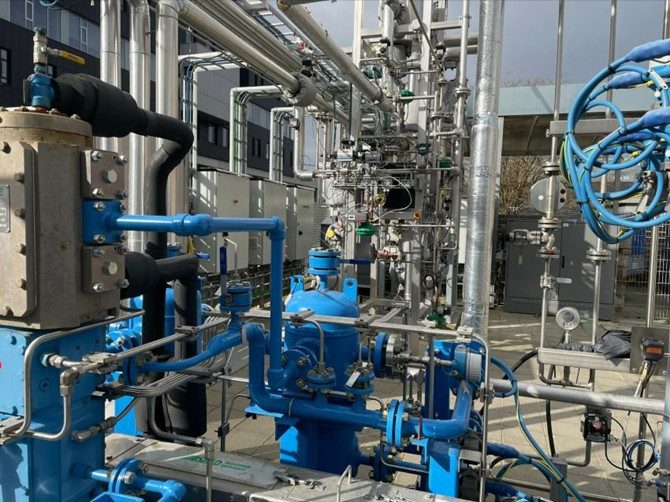
Italian energy majors win EU funding for green hydrogen projects: Two projects by Italian multinational corporations Enel Green Power and Eni for the development of green hydrogen through electrolyzers fueled by renewable energy will receive public funding approved under European Union’s (EU) IPCEI Hy2Use. The IPCEI Hy2Use is a project of common European interest aimed at supporting research and innovation and the construction of related infrastructure to enable the first industrial applications of hydrogen. The project was jointly prepared and notified by 13 EU Member States. Under the project, the EU plans to allocate up to €5.2 billion to support research and innovation, the first industrial application, and the construction of related infrastructure in the hydrogen value chain.
Green Corridors
Port of Gothenburg and the North Sea Port set up the green corridor and offer discounts for ships using cleaner fuels: Belgian North Sea Port and Swedish Port of Gothenburg have come together to establish a green corridor, aiming toward using alternative fuels for seagoing vessels by 2025. The green corridor was launched on Gothenburg Port Day on 12 October, when the CEOs of the Gothenburg Port Authority and North Sea Port met in Gothenburg. For the route between the two ports to become a green corridor, the Port of Gothenburg and North Sea Port is making adaptations to infrastructure. These include sustainable fuel bunkering operating regulations and an increase in discounts on port dues for ships using cleaner fuels through their respective environmental discount systems.
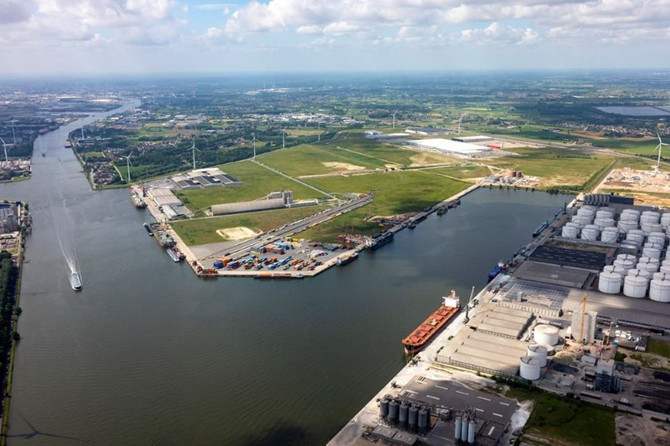
Ports
Port of Blyth to boost decarbonization efforts with new equipment: UK’s Port of Blyth has added a new electric crane to its fleet of equipment to increase its capacity capabilities and reduce emissions. The new crane Gottwald ESP.6 mobile harbor crane built by Finnish manufacturer Konecranes is part of the port’s strategy to become as energy efficient as possible by decarbonizing all equipment including forklift trucks and cranes. The crane, which has a 125-tonne lift capacity, is said to eliminate carbon emissions and keeps noise to a minimum.
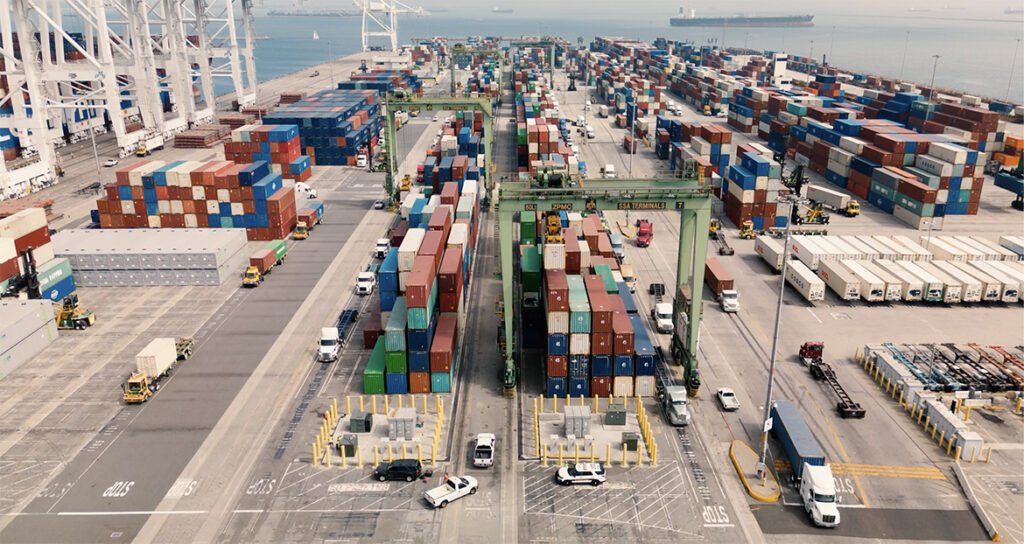
Regulations
EU lawmakers call for a 2% green marine fuel mandate by 2030: Europe’s lawmakers adopted their position on draft EU rules on the use of renewable and low-carbon fuels in maritime transport (FuelEU Maritime) with a 2% mandate by 2030. The European Parliament is pressing the maritime sector to cut greenhouse gas (GHG) emissions from ships by 2% as of 2025, 20% as of 2035, and 80% as of 2050 compared to the 2020 level. The European Commission had proposed cuts of 13% by 2035 and 75% by 2050. This would apply to ships above 5,000 gross tonnage, to all energy used on board in or between EU ports, and to 50% of the energy used on voyages where the departure or arrival port is outside of the EU or in its outermost regions.
EU policymakers urged to raise climate ambition in the FuelEU Maritime and EU ETS: While the European Parliament gears up to vote on the FuelEU Maritime as the ‘Fit for 55’ package of legislative proposals enters its final stage, EU policymakers are being called to raise climate ambitions in the proposals. Signatories of the Getting to Zero Coalition said that in this way, the production and use of zero-emission fuels made from net-zero energy sources, including green and blue hydrogen, ammonia, methanol, and sustainable biofuels can be incentivized. The coalition urged the European Parliament to consider creating incentives for the uptake of renewable fuels, inter alia, including a sub-target and a multiplier for these renewable fuels as proposed by the EU Parliament’s Committee on Transport and Tourism.
Furthermore, it was proposed to increase the carbon intensity reduction targets in FuelEU Maritime complemented by corresponding supportive mechanisms to allow the maritime value chain to make the transition. Finally, FuelEU Maritime should be strongly connected to EU ETS by ensuring that the zero-rating principle for renewable fuel use is extended to shipping.
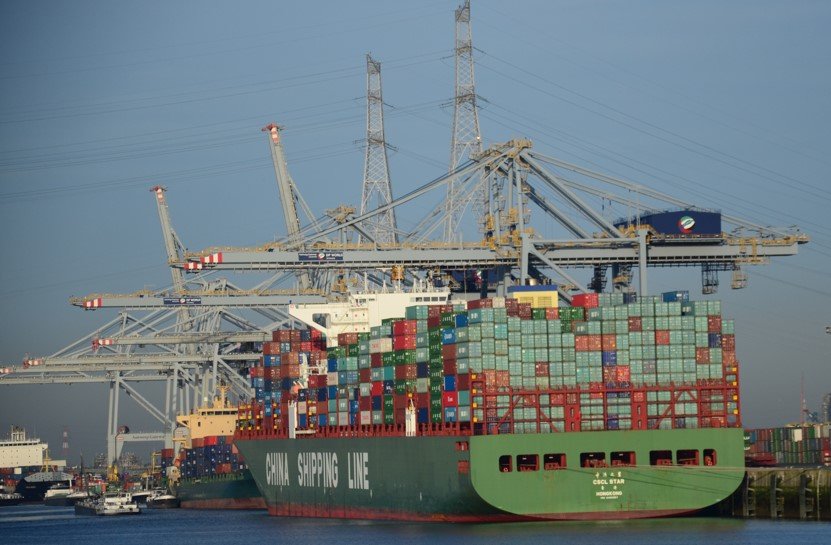 S. Korean government to increase R&D investment in shipbuilding sector:
S. Korean government to increase R&D investment in shipbuilding sector: The South Korean government announced that it would invest more than 140 billion won in R&D in the shipbuilding sector so that South Korea’s share in the global high value-added ship market can reach 75 percent by 2030. The government’s new projects in the sector include the domestic development of LNG-fuelled ship technologies. The investment will be made next year, and additional investments will follow in developing carbon capture and storage for use in ships, rotor sails, and so on. A liquid hydrogen carrier prototype is scheduled to be built starting in 2024 and the carrier is expected to be put into commercial operation in 2029. At the same time, the government is working on new laws about the commercialization of autonomous ship navigation based on remote control.
By Maria Bertzeletou, Breakwave Advisors
The opinions expressed herein are the author's and not necessarily those of The Xinde Marine News.
Please Contact Us at:
media@xindemarine.com
















 Ningbo Containerized Freight Index Weekly Commentar
Ningbo Containerized Freight Index Weekly Commentar  Ningbo Containerized Freight Index Weekly Commentar
Ningbo Containerized Freight Index Weekly Commentar 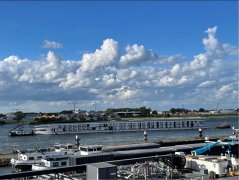 Century Cruises enters European market – river cr
Century Cruises enters European market – river cr 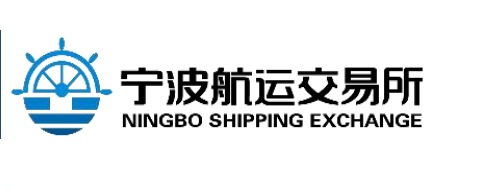 Ningbo Containerized Freight Index Weekly Commentar
Ningbo Containerized Freight Index Weekly Commentar  Ningbo Containerized Freight Index Weekly Commentar
Ningbo Containerized Freight Index Weekly Commentar 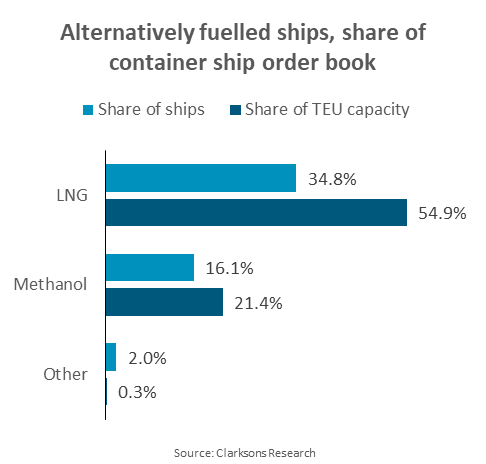 BIMCO Shipping Number of the Week: More than 500 al
BIMCO Shipping Number of the Week: More than 500 al